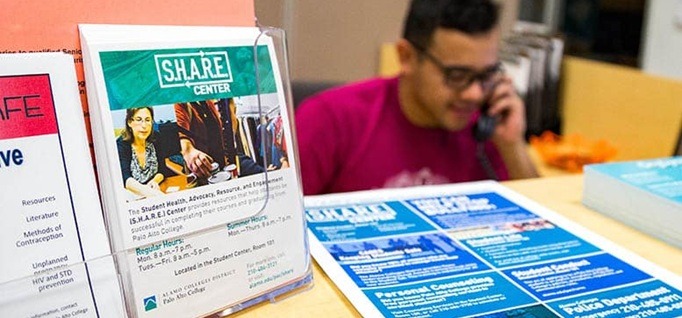Creative approaches to house students
By Dennis Pierce
July 23, 2025
Community college leaders have long realized that the more barriers to success they can eliminate, the more likely students are to graduate. Now, a growing number of colleges are adding housing insecurity to the list of barriers they’re tackling by providing stable, safe and affordable housing options for students.
The number of community colleges that offer student housing is on the rise. Many two-year colleges are building dormitories on campus. As of 2023, nearly three of 10 public community colleges (28.1%) offered on-campus housing, up from 22.8% in 2010, according to an analysis of federal data by the American Association of Community Colleges.
Others have taken more creative approaches by partnering with outside organizations to house students, such as four-year colleges, housing placement services and even companies like Airbnb.
Whatever the model, campus leaders note that stable housing is something many students desperately need.
“We already help students with services such as transportation and emergency aid,” said Carmen Velasquez, director of student advocacy for Palo Alto College in Texas, part of the Alamo Colleges District. “But if students don’t have a stable place to lay their head at night, then their mind and heart won’t be in the game.”
Leveraging vouchers
All five colleges in the Alamo Colleges District have a student advocacy center that provides mental health counseling, case management services, a food pantry and a clothes closet where students can borrow professional-looking attire for job interviews or workplace environments. In 2021, the district added housing placement to this list of student supports.
At Palo Alto College, up to 8% of the college’s 11,000 students have self-identified as being housing insecure, Velasquez said. But she believes the scope of the challenge is even larger than students report.
“If you’re couch surfing from house to house, then you don’t really have stable housing,” she noted.
The district has partnered with Opportunity Home San Antonio, a local housing authority, to provide students in need with federal Section 8 housing assistance vouchers and a list of apartments that accept them. Opportunity Home San Antonio also fast-tracks students into the program, because otherwise, it can take a few years for students to become eligible for the vouchers.
“Obviously, our students can’t wait that long,” Velasquez said.
What’s more, the district uses grant funds and donations to provide students with “starter kits” of items they’ll need to live on their own, such as pillows, sheets, blankets, utensils and cookware.
“Once we focused on housing, we saw our retention rates rise,” Velasquez said.
Using four-year institutions
Providing affordable housing options for students is an extension of meeting Maslow’s Hierarchy of Needs, said Jason Zelesky, dean of student affairs at Mount Wachusett Community College (MWCC) in Massachusetts.
“Housing in Massachusetts is far from ample — and not very affordable,” he pointed out.
Four years ago, MWCC partnered with Fitchburg State University and LUK Inc., a nonprofit social service agency, to identify up to 10 high-need students each year — many of whom were transitioning out of foster care — and provide them with housing, scholarship aid and counseling using state grant money earmarked for this purpose.
The partnership has proven so successful that MWCC and Fitchburg State have expanded on it to provide housing for students whose needs aren’t as urgent.
Under the new Community College Housing Program, Fitchburg State is making dorm rooms available for MWCC students who need affordable housing. Students can live on the Fitchburg State campus, which is 14 miles from MWCC, year-round or just during the school year, and they can even choose a meal plan if they want. Students pay the normal rate for room and board at the university, which averages $15,000 per year.
“They’re getting parking, high-speed Internet access, heat, safety and security,” Zelesky said. “They also have full access to the Fitchburg State rec center, gym and library, as well as all campus events. The rooms are fully furnished, so students don’t have to pay for furniture — they can just move right in. The bathrooms are cleaned for them, and they can engage in student life. They can even use financial aid to help pay for their housing expenses. It’s really a great deal. Our students can’t find a fully furnished apartment with all incidentals included for $1,250 a month.”
Not only does the program offer stable and affordable housing, but it enables students who want to transfer to a four-year institution to enjoy the benefits of campus living during their first two years of college as well. And it’s a win for all parties involved, as Fitchburg State anticipates that many MWCC students will finish their bachelor’s degree with the university if they’re already living on campus.
The program launched during the spring 2025 semester with three student participants, and Fitchburg State can accommodate about 150 in all. That number could fluctuate depending on how full the university’s dorm rooms are in a given semester.
One of the three initial participants needed alternative housing because she was a victim of domestic violence.
“She moved into a Fitchburg State dorm room later than same day, and she didn’t miss a single class here,” Zelesky said.
But the partnership also fills other, less exigent needs. For instance, MWCC offers a highly sought-after, two-year media arts degree with top-notch facilities that draws students from all over the Northeast.
“We’ve had students live in hotels from Monday through Wednesday so they could take that program,” Zelesky said. Now, students from outside the community can enroll in MWCC courses and have a safe, affordable place to live full-time.
There’s more to the story! Read the full article in CC Daily.



